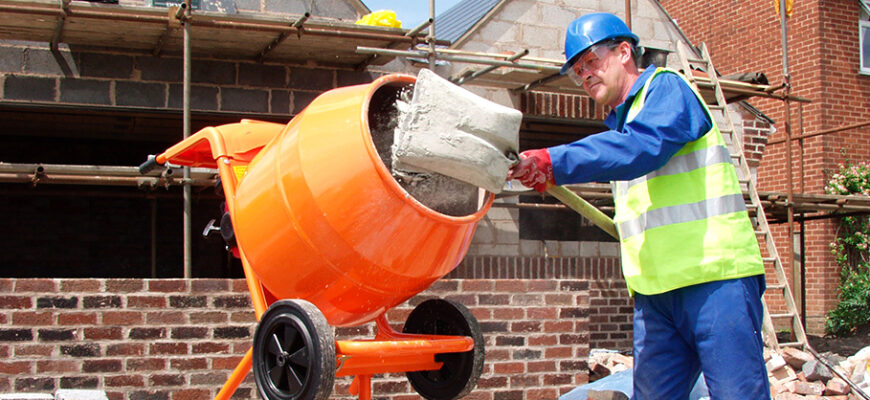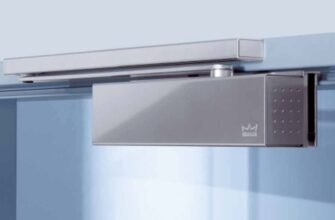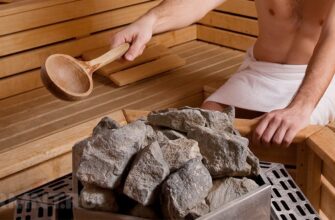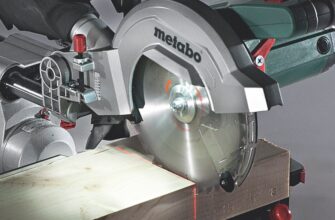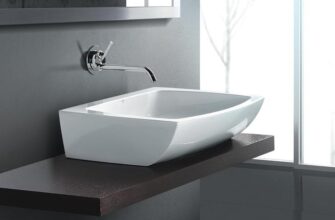The dacha and the suburban area are not only barbecues and outdoor recreation, but also a large number of various construction works that require the use of various machinery and equipment. Even the simplest work with concrete will be much more effective if you do not mix the mortar by hand, but resort to using a concrete mixer. Modern devices of this class are distinguished by their compact size, excellent functionality and significantly increase labor productivity, saving a lot of time. All that is required of you is to choose the right concrete mixer!
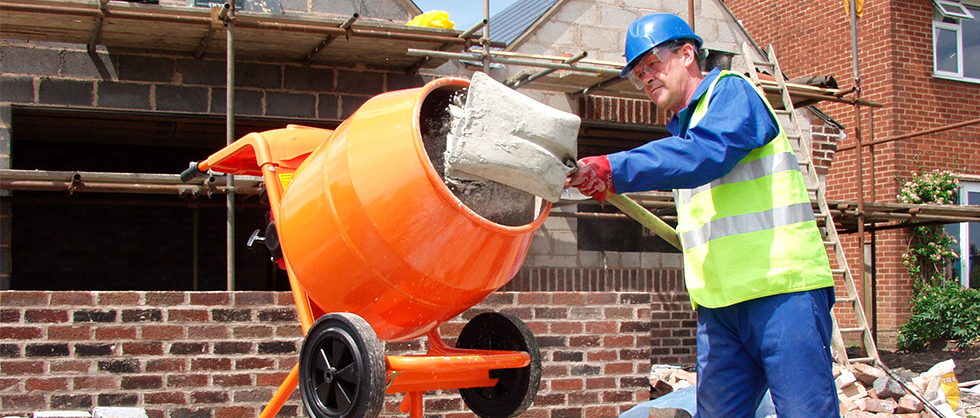
- The best manufacturers of concrete mixers – which company to choose
- The principle of operation and the device of a concrete mixer
- Types of concrete mixers
- Compulsory concrete mixers
- disadvantages
- Gravity type concrete mixers
- disadvantages
- Gear-type concrete mixers
- disadvantages
- Crown type concrete mixers
- disadvantages
- Concrete mixer selection parameters
- Drum total volume
- Engine power
- Voltage
- The material from which the crown is made
- Which concrete mixer to choose?
- How much does a concrete mixer cost?
The best manufacturers of concrete mixers – which company to choose
Currently, a huge number of concrete mixers of various types are presented on the market, with their own functional features that directly affect the efficiency of work. The price range also differs: you can buy both an inexpensive Chinese model and high-quality, but expensive equipment from well-known American or European manufacturers. In general, experts recommend paying attention to the products of the following brands:
-
Caterpillar;
-
Denzel
-
Inforce;
-
Zirtek;
Each of these manufacturers has a large number of different concrete mixers in its own catalog, and in order to choose the best option, you should familiarize yourself with the characteristics, as well as study the reviews of buyers who have tried this or that model in action.
The principle of operation and the device of a concrete mixer
The concrete mixer is designed for quick preparation of high-quality cement-sand mixture for construction work. Such a device works automatically, and electric current almost always acts as a driving force. The main units of any concrete mixer are:
-
Drum equipped with paddles. Serves as a reservoir into which all components of the cement-sand mixture are loaded and mixed together;
-
Frame – steel or aluminum frame, on which all the key elements of the device are fixed;
-
Electric motor – a motor that drives a drum with blades;
-
Control panel designed to control the operation of the device;
If the concrete mixer belongs to the household class and has acceptable dimensions and low weight, the delivery set may include wheels for transporting and moving the device during operation.
Types of concrete mixers
All concrete mixers currently on sale can be divided into two general categories.
Compulsory concrete mixers
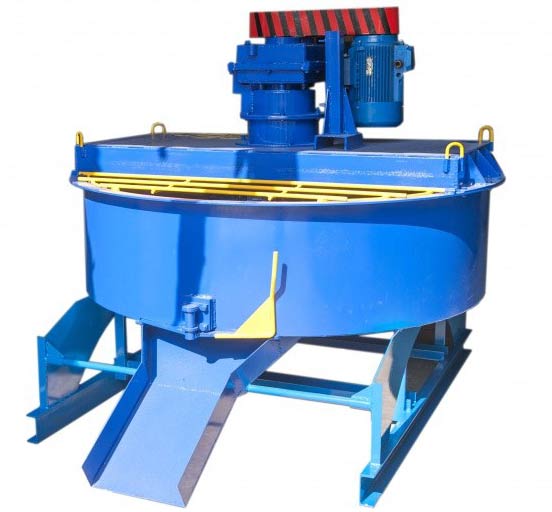
They represent a stationary reservoir, inside which a shaft rotates with blades fixed on it. It is with their help that a high-quality cement-concrete mixture is prepared, uniform and well-mixed. Compulsory concrete mixers are mostly professional devices at the disposal of construction trusts and organizations involved in monolithic work.
Advantages
-
High-quality mixing of concrete mixtures;
-
Long term of work;
-
High reliability;
-
The ability to work with a solution of various consistencies – from liquid to thick;
disadvantages
-
High price;
-
Requirement to the size of the fraction of the components used;
-
Substantial energy consumption;
Gravity type concrete mixers
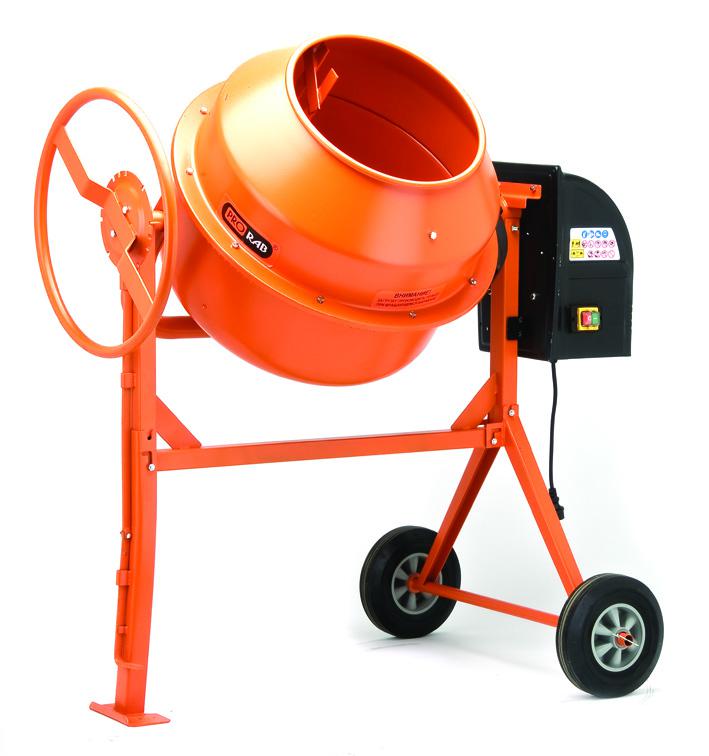
The main unit of such a device is a drum, on the walls of which the blades are fixed. It is driven by an electric motor, and, being in rotation, the drum mixes the components of the cement-sand mixture to a homogeneous state.
Advantages
-
Unpretentiousness to the components used;
-
Mobility;
-
Low cost;
-
Simple and reliable design;
-
Low power consumption;
-
Mixes even coarse concrete mix;
disadvantages
-
Low performance;
-
Long-term work is required to obtain a solution of a uniform consistency;
Gear-type concrete mixers
Devices, the design of which is similar to the above class, but differs from it in the type of drive used. In this model, the traction force of the electric motor is transmitted to the drum through a gearbox with a certain gear ratio. This allows you to adjust the drum rotation speed and reduces energy consumption and engine load;
Advantages
-
High performance;
-
Simplicity of construction;
-
Maximum reliability;
disadvantages
-
High price;
-
The need for careful operation;
Crown type concrete mixers
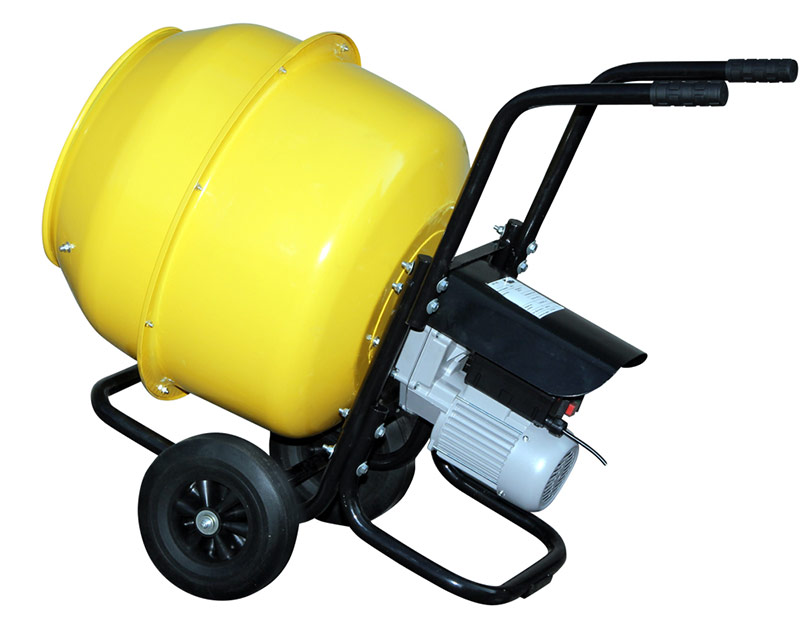
The most common devices that are popular in everyday life and when performing small monolithic works. The principle of operation is similar to that of gravitational models, only the method of transferring force from the electric motor differs. For this purpose, a crown is used – a special toothed belt fixed around the circumference of the drum. Interacting with the drive gear, the crown activates the drum, and the solution is mixed;
Advantages
-
Compact dimensions;
-
“Omnivorous” – allow mixing a solution containing a fraction of various sizes;
-
Low cost;
-
Simple, unpretentious design;
disadvantages
-
Low productivity due to the small volume of the tank;
The need for careful monitoring of the state of the crown in order to avoid its failure;
Concrete mixer selection parameters
Having decided on the type of concrete mixer, it is necessary to take into account its key features, which directly affect the functionality.
Drum total volume
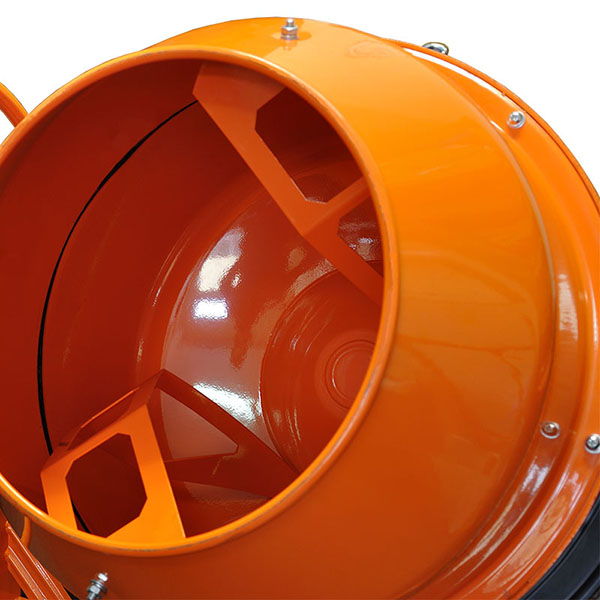
The higher the volume, the more concrete the device will mix at one time. There is also a downside to the coin: mixing a large amount of mass will require a lot of electricity, and there is also a high probability that some percentage of the finished mixture will be unused.
-
For domestic use, models should be preferred, the volume of which will be up to 100-150 liters;
-
Industrial production may require the use of a larger concrete mixer with a volume of 150 to 300 liters;
-
Professional monolithic works associated with large pouring areas require the use of powerful and capacious devices with a volume of more than 300 liters;
Engine power
A parameter that directly affects the performance of the device and the ability to work in particularly difficult conditions. For domestic use, models with an electric motor with a power of 500-800 W are quite enough. Industrial production may require much more powerful devices, up to 1-1.5 kW.
Voltage
A parameter that directly affects the applicability of a particular device in everyday life or in production.
-
When used in a domestic environment, preference should be given to concrete mixers with a single-phase motor operating at a voltage of 220V;
-
Industrial models are almost always equipped with a 380 volt three-phase motor;
The material from which the crown is made
A parameter that is very relevant for household concrete mixers, which directly affects the resource of the device.
-
Polyamide is a strong, durable and reliable material. It has a high resource and is unpretentious in operation. The polyamide crown, as a rule, has a four-part structure, which simplifies its repair: in case of damage, it is enough to replace the damaged fragment;
-
Cast iron. “Grandfather” material widely used in budget devices. Possesses sufficient strength subject to the rules of operation;
-
Steel. It is used in the most expensive models of concrete mixers and provides excellent performance. The only negative is the price;
Which concrete mixer to choose?

-
When buying a device for performing one-time construction work, it is best to give preference to a household wreath-type model operating from a 220 Volt network and equipped with an electric motor with a power of 0.5-0.7 kW;
-
In the case when the use of a concrete mixer will be of a regular nature, a gear-type device should be preferred, operating from a 220V network and having a tank volume of 150-200 liters;
-
Professional execution of monolithic works requires the use of appropriate equipment. A gearbox concrete mixer with a tank with a capacity of 250-300 liters, the electric motor of which is powered by a 380 V. network is the best choice.
How much does a concrete mixer cost?
-
Compact gravity concrete mixers with a tank of up to 100 liters are quite budgetary: their cost rarely exceeds 10 thousand rubles;
-
Coronal devices for household use have a similar order of numbers on the price tag – from 8 to 15 thousand rubles;
-
Professional forced-type equipment is the most expensive. Prices for models from well-known manufacturers almost always start at 50-55 thousand rubles and can go up to 200-250 thousand.
In the following articles, our experts will tell you how to choose a gas water heater and the secrets of choosing stones for a bath.
Attention! This material is the subjective opinion of the authors of the project and is not a purchase guide.

